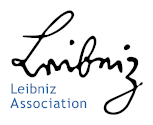- The Institute
- Research
- Dictatorships in the 20th Century
- Democracies and their Historical Self-Perceptions
- Transformations in Most Recent History
- International and Transnational Relations
- Edited Source Collections
- Dissertation Projects
- Completed Projects
- Dokumentation Obersalzberg
- Center for Holocaust Studies
- Berlin Center for Cold War Studies
- Publications
- Vierteljahrshefte
- The Archives
- Library
- Center for Holocaust Studies
- News
- Dates
- Press
- Recent Publications
- News from the Institute
- Topics
- Munich 1972
- Confronting Decline
- Feminist, Pacifist, Provocateur
- Der Mauerbau als Audiowalk
- Digital Contemporary History
- Transportation in Germany
- Envisaged Futures at the End of the Cold War
- From the Reichsbank to the Bundesbank
- German Federal Chancellery
- History of Sustainabilities: Discourses and Practices since the 1970s
- Changing Work
- Democratic Culture and the Nazi Past
- The History of the Treuhandanstalt
- Foreign Policy Documentation (AAPD)
- Dokumentation Obersalzberg
- Hitler, Mein Kampf. A Critical Edition
- "Man hört, man spricht"
- Dictatorships in the 20th Century
- Democracies and their Historical Self-Perceptions
- Transformations in Most Recent History
- International and Transnational Relations
- Edited Source Collections
- Dissertation Projects
- Completed Projects
- Dokumentation Obersalzberg
- Center for Holocaust Studies
- Berlin Center for Cold War Studies
Economic Policy Models in Germany between Crisis and Expectations of Growth, 1970-2000
Employees (IfZ):
Prof. Dr. Dierk Hoffmann
Projektinhalt:
Even into the early 1970s, people continued to maintain the “short dream of eternal prosperity” (Burkart Lutz). Following Karl Schiller’s “global steering”, West Germany’s governing Grand Coalition adopted Keynesian regulation as a central part of its economic policy. Following the recession of 1966/67, it seemed that the long-term stabilization of economic growth would automatically lead to increasing state revenues. How utopian this expectation in fact was would emerge after the first global oil crisis of 1973. A number of fundamental assumptions were shaken all at once, and belief in constant economic growth in particular.
Faith in progress was indeed a salient characteristic of the state-socialist economic policy in the GDR as well; and there too it would be stretched to its limits. In the West, however, the role of the state in terms of economic policy was increasingly the subject of critical discussion. The unification of Germany in 1990 cast a different light, for a short period of time, on the interventionist state in the face of the transformation of the planned economy and the emerging problems in the five new states of the Federal Republic of Germany. The wave of privatization reached its peak in the 1990s, for example in the telecommunications industry. While East Germany’s SED leadership had, by the mid-1970s, already been internally aware of the state’s impending bankruptcy, it publicly held fast to pursuing a solution to the crisis through the continuation of the system of planned economy.
This project, carried out by Dierk Hoffmann, aims to comprehensively investigate economic policy models and understandings of economic growth in particular, using the examples of the Ministry of Economy of the Federal Republic of Germany and the State Planning Commission of the GDR.





